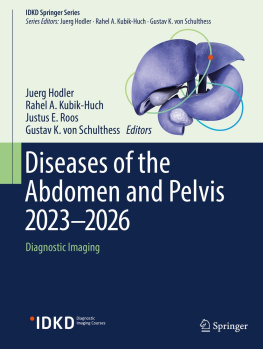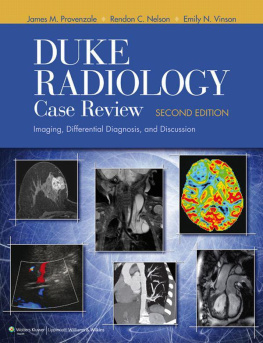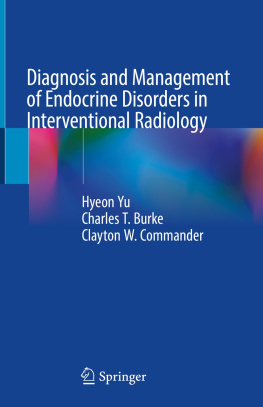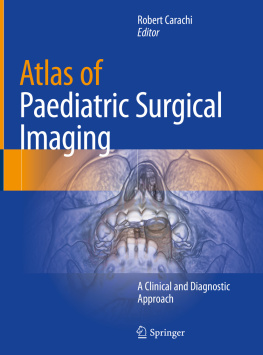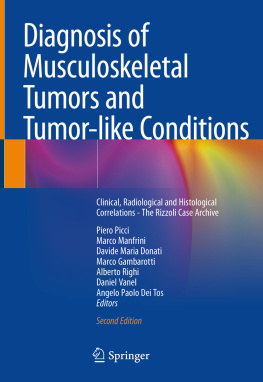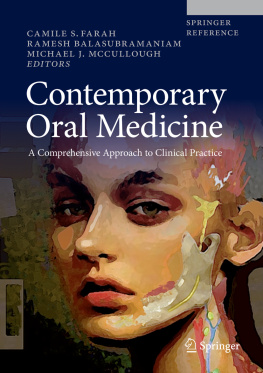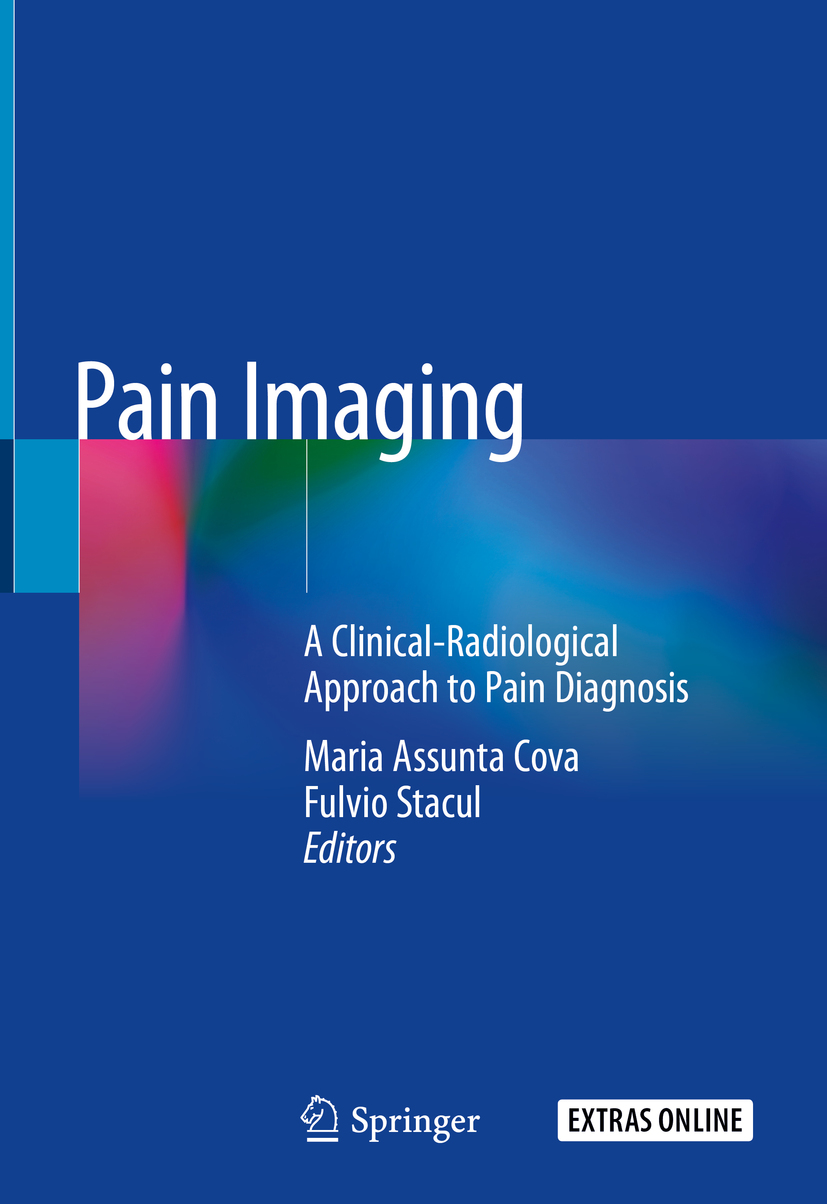Editors
Maria Assunta Cova and Fulvio Stacul
Pain Imaging A Clinical-Radiological Approach to Pain Diagnosis
Editors
Maria Assunta Cova
Department of Radiology, Cattinara Hospital, University of Trieste, Trieste, Italy
Fulvio Stacul
Department of Radiology, Maggiore Hospital, Trieste, Italy
ISBN 978-3-319-99821-3 e-ISBN 978-3-319-99822-0
https://doi.org/10.1007/978-3-319-99822-0
Library of Congress Control Number: 2019932989
Springer Nature Switzerland AG 2019
This work is subject to copyright. All rights are reserved by the Publisher, whether the whole or part of the material is concerned, specifically the rights of translation, reprinting, reuse of illustrations, recitation, broadcasting, reproduction on microfilms or in any other physical way, and transmission or information storage and retrieval, electronic adaptation, computer software, or by similar or dissimilar methodology now known or hereafter developed.
The use of general descriptive names, registered names, trademarks, service marks, etc. in this publication does not imply, even in the absence of a specific statement, that such names are exempt from the relevant protective laws and regulations and therefore free for general use.
The publisher, the authors, and the editors are safe to assume that the advice and information in this book are believed to be true and accurate at the date of publication. Neither the publisher nor the authors or the editors give a warranty, express or implied, with respect to the material contained herein or for any errors or omissions that may have been made. The publisher remains neutral with regard to jurisdictional claims in published maps and institutional affiliations.
This Springer imprint is published by the registered company Springer Nature Switzerland AG
The registered company address is: Gewerbestrasse 11, 6330 Cham, Switzerland
To Gabrio
Foreword
Writing a radiological book dedicated to a symptom, rather than to an organ or a disease process, is quite unusual. It is, however, a much needed new way to present radiology. As a matter of fact, patients come to the Radiology Department complaining of symptoms and signs and with a request for imaging in order to identify their origin. I do really believe that the better the radiologist understands his/her patients complaints, the better he/she is able to choose the correct imaging modalities to evaluate them and to provide a correct interpretation of their findings. The editors of this volume have prepared a radiological textbook that takes into consideration the patients symptoms first: in this case, the book is dedicated to the symptom of pain.
Our discipline has a central role in healthcare: all diagnoses and decisions on patients management are mostly based on the results of imaging, and image-guided procedures allow minimally invasive therapies in many cases. However, the radiologist is almost unknown to the patient, and many people do not even know that we are physicians.
It is quite important to learn how to work through this clinical-radiological approach. On one side, it makes us able to provide a better service to our patients; on the other, it teaches how to get closer to patients, to understand better their symptoms, and to link them to our results. This underlines our role as physicians and, I am sure, makes it perceived by our patients too.
Clinical chapters are written by clinicians, and this reinforces the clinical-radiological approach of the book by providing information on what clinicians want from our examinations. I am sure this volume will prove useful not only to radiologists but also to emergency medicine physicians and to colleagues of other specialties who want to understand which are the best tests to use to identify the causes of pain in different areas of the body and what are the results they can expect from them.
M. A. Cova and F. Stacul have to be thanked for guiding the preparation of this book through a novel way and for helping the authors of the different chapters in following it. I am sure this is the starting point of a new teaching method in radiology.
Lorenzo E. Derchi
January 2019
Preface
Pain can be a major clinical challenge. Its correct assessment is often related to a careful analysis of the patient history, to an accurate physical examination, to the evaluation of laboratory data, and to an appropriate referral to diagnostic imaging.
This book addresses pain imaging aspects in both neuro and body, thus updating the international literature scenario on the topic. Actually, books on pain imaging published so far provided a partial approach to this issue, considering specific fields only. The book aims to provide a comprehensive clinical-radiological approach, and it underlines the need of a close cooperation among clinicians and radiologists. It offers differential diagnoses for a number of painful syndromes, as many of them can mimic one other, and it aims to help in the diagnostic management of these patients, suggesting the most appropriate diagnostic algorithm.
The book is structured into sections for each anatomical macro-area (the brain, spine, thorax, abdomen, and pelvis), and dedicated chapters cover the topics from both a clinical and radiological point of view.
Following introductive chapters considering mechanisms of pain and the brain imaging of pain, the neurological section approaches headache, trigeminal neuralgia, and spine pain. As to the thorax, both vascular and nonvascular causes of pain are addressed. A number of disease possibly responsible of abdominal pain are considered, including biliary colic and cholecystitis, pancreatitis, renal colic, pyelonephritis, bowel obstruction, bowel perforation, inflammatory bowel disease, and vascular disease. Finally, some diseases causing pelvic pain are addressed, namely, uterine disease, ovarian disease, endometriosis, and testicular disease.
The chapters offer a state-of-the-art approach to clinical challenging situations and provide up-to-date knowledge on the present contribution of imaging techniques, thanks to the newest technological developments.
The book provides electronic supplementary material including radiological images that allow a comprehensive evaluation of some cases that were included in the chapters. This approach allows the reader to consider a full set of images, thus getting an overall view of the anatomical involvement by the disease overcoming the limit of evaluating just a single selected image.
We strongly hope the book could be a valuable tool for radiologists, neuroradiologists, neurologists, clinicians, and surgeons, working in general hospitals and teaching hospitals, from residents to consultants.
Maria Assunta Cova
Fulvio Stacul
Trieste, Italy
Contents
Paolo Manganotti and Stefano Tamburin
Massimo Caulo , Valerio Maruotti and Antonio Ferretti
Antonio Granato and Paolo Manganotti
Maja Ukmar , Roberta Pozzi Mucelli , Irene Zorzenon and Maria Assunta Cova
Paolo Manganotti and Antonio Granato
L. Pasquini and A. Bozzao
Luigi Murena , Gianluca Canton , Gioia Giraldi and Stefania Bassini


